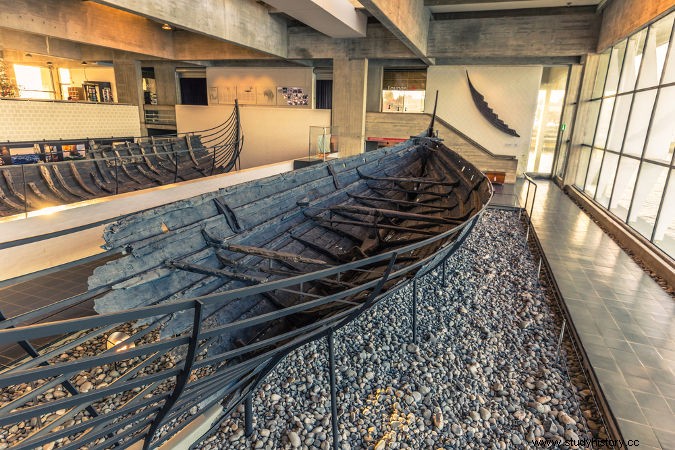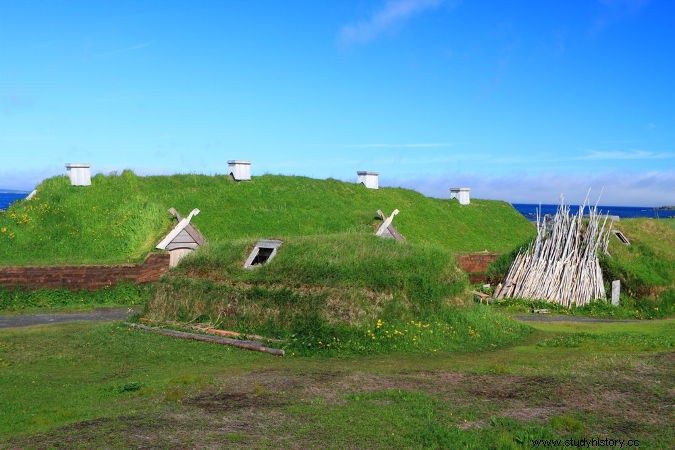
The Vikings were a people who inhabited northern Europe (in Scandinavia), in a period known as the Viking Age, which spanned from the 8th to the 11th century. This time was marked by the incursions of the Vikings in different regions of the European continent, with different purposes:from obtaining land for colonization and cultivation, through the carrying out of trade, to looting and looting.
Characteristics of Vikings
The existence of the Vikings was reduced to a chronological period known as the Viking Age , which began in 793, with the Viking attack on the monastery of Lindisfarne. This event began the period of navigation of this people through Europe. The end of the Viking Age came in 1066, when the Normans (Vikings who had settled in Normandy) attacked and conquered England under the leadership of William the Conqueror.
According to historian Johnni Langer, the term viking originates from the Old Norse “vikingr ”, which was used to refer to mercenaries and pirates. However, this was not an expression used by the Vikings to refer to themselves as a people, and its use in reference to the Norse of this period was only popularized in Europe from the 18th century onwards|1| .

L'Anse aux Meadows, archaeological site of a Viking village built in Canada in the 12th century
The Vikings inhabited, at first, the regions that correspond to present-day Scandinavia:Norway, Sweden and Denmark. However, with the mastery of navigation techniques, the Vikings spread to several places, such as Eastern Europe (present-day Russia and Ukraine), Normandy, Britannia (present-day England), Scotland, Iceland, Greenland and, around the year 1000, reached North America (now Canada).
Historians speculate that the cause of the Scandinavians' expeditions was the population growth in the region, which would have generated a lack of food and started a process of dispute and search for better lands. In addition, power struggles and the desire to promote commercial expansion have been raised by historians as other reasons that help us understand these Viking maritime expeditions.
Society and religion
Viking society was characterized by its hierarchy, that is, its social division into very well defined social classes. Despite the existing divisions, all free men (and this includes rich and poor) had the rights of citizens and, therefore, could participate in the decision-making in the assemblies (things). ).
The top of the Vikings' social hierarchy was occupied by the king , military and religious chief of the territory he controlled. The centralization of power took place throughout the Viking Age in Scandinavia and contributed to the strengthening of the position of kings. His power was hereditary, but that heredity was not necessarily from father to son.
In this hierarchy, below the kings were the nobles , popularly known as jarls . They were possessed of great wealth and vast amounts of property and possessed considerable military might. In certain parts of Scandinavia, the power of the jarls it was so great that it rivaled royal power.
In a position below the nobles were the “Nordics free ”, which were basically every Scandinavian who was neither a noble nor a slave. This was the largest group in Viking society and consisted of peasants, fishermen, merchants, artisans, etc. Finally, the slaves they were the foundation of Viking society. Considered the property of citizens, slaves could be convicted criminals, people in debt, or foreigners.
The religion of the Vikings does not have a specific term to name it, so historians use the expression paganism Nordic . The Norse religion had elements of shamanism (religious practice that has magic and trance as elements) and was formed by the belief in different gods, that is, it was polytheistic .
Of the main gods that the Norse believed in, Odin stood out. and Thor . Odin was for the Vikings the most powerful and wise god, considered the creator of everything and referred to as the “All-Father”. Thor was the thunder god and the most worshiped in all of Scandinavia. The Vikings believed that part of their gods lived in Asgard , one of the nine existing worlds in his belief.
These nine worlds, according to this belief, were linked together from Yggdrasil , the ash of life. The connection of Midgard (middle land, world of humans) with Asgard (abode of part of the gods) happened through the Bifrost , the rainbow bridge protected by the god Heimdall.
The Norse still believed that the universe would have a catastrophic end known as Ragnarök , in which the old gods would die and a universe would follow. This conception, however, is questioned in relation to its veracity by historians, since, it is claimed, it would be based on Christianity and, therefore, had no real basis in Nordic religiosity. The Vikings underwent an intense process of Christianization from the 10th century onwards.
|1| LANGER, Johnni. Gods, Monsters and Heroes:Essays on Viking Mythology and Religion. Brasília:EdUnb, 2009, p. 169.
*Image credits:RPBaiao and Shutterstock
Take the opportunity to check out our video lesson on the subject:
